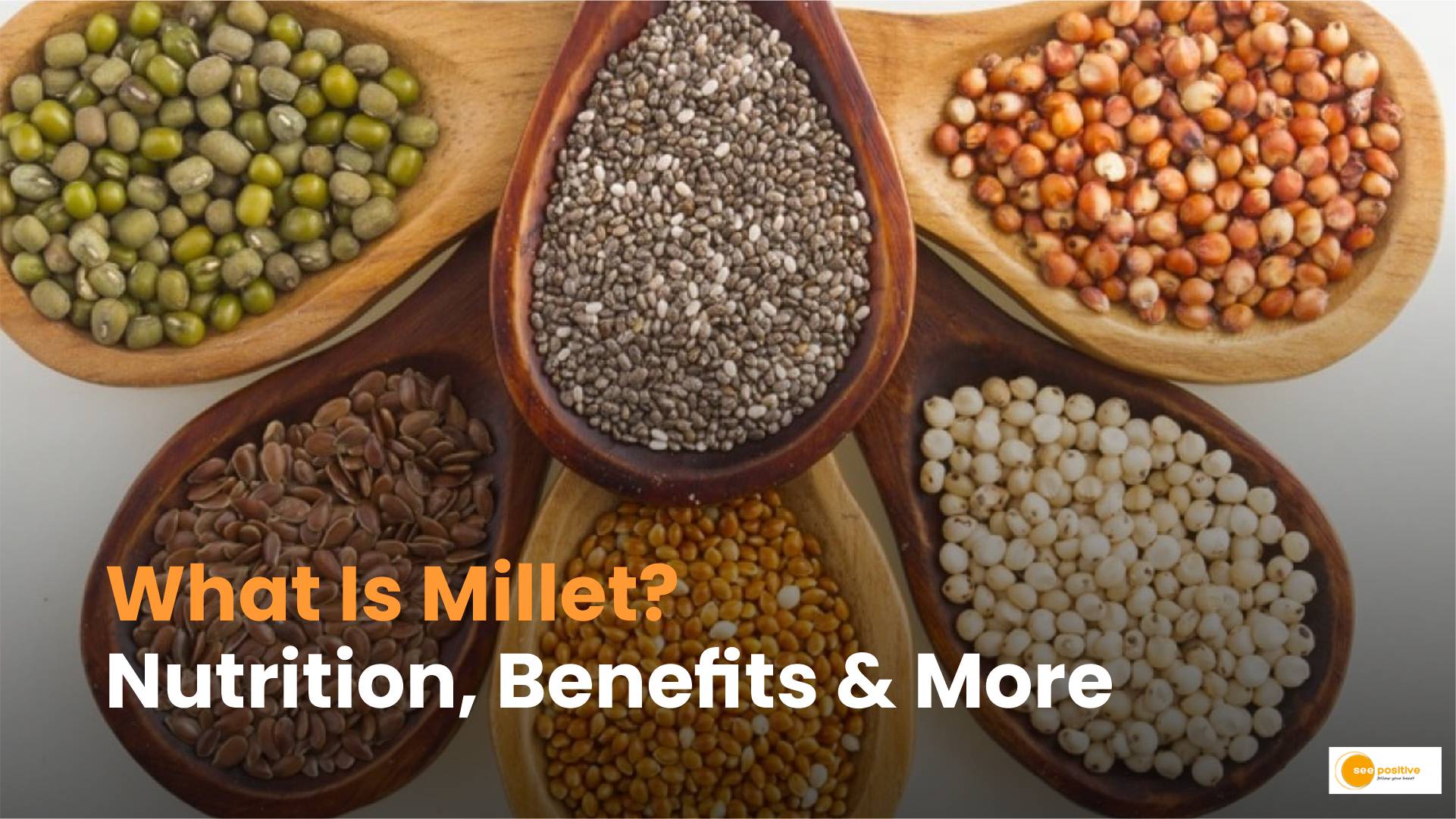Millet, often considered a humble grain, has been a staple food for centuries in many parts of the world. However, its nutritional benefits and versatility are gaining recognition in modern diets. From being gluten-free to packing a nutritional punch, millet offers a range of health benefits that make it a worthy addition to any meal plan. In this article, we’ll delve into what millet is, its nutritional composition, health benefits, culinary uses, and more.
Understanding Millet:
Millet refers to a group of small-seeded grasses that belong to the Poaceae family. While there are several types of millet, the most commonly consumed varieties include pearl millet, foxtail millet, finger millet, and proso millet. Millet is highly adaptable and can thrive in various climates and soil conditions, making it a resilient crop.
Types of Millet
Millets come in various species and colors, each with unique attributes. They are divided into two main categories:
Large Millets:
- Pearl Millet: Widely produced for human consumption.
- Foxtail Millet: Known for its drought resistance.
- Proso Millet: Used both for human consumption and livestock feed.
- Finger Millet (Ragi): Rich in calcium.
Small Millets:
- Kodo Millet
- Barnyard Millet
- Little Millet
- Guinea Millet
- Browntop Millet
- Fonio
- Adlay (Job’s Tears)
Nutritional Composition:
Millet is a nutritional powerhouse, offering a range of essential nutrients in each serving. Here’s a breakdown of its nutritional composition:
- Carbohydrates: Millet is primarily composed of carbohydrates, providing sustained energy to the body. It is a complex carbohydrate, which means it is digested slowly, resulting in a gradual release of glucose into the bloodstream and steady energy levels.
- Protein: Unlike some other grains, millet is relatively high in protein, making it an excellent plant-based protein source for vegetarians and vegans. It contains essential amino acids, including lysine, which is often lacking in other grains.
- Fiber: Millet is rich in dietary fiber, which supports digestive health, regulates blood sugar levels, and promotes satiety. Including millet in your diet can help prevent constipation and support overall gut health.
- Vitamins and Minerals: Millet is packed with vitamins and minerals, including magnesium, phosphorus, manganese, iron, and B vitamins such as niacin, thiamine, and riboflavin. These nutrients play vital roles in various physiological functions, including energy metabolism, bone health, and immune function.
- Calories: 207
- Carbohydrates: 41 grams
- Fiber: 2.2 grams
- Protein: 6 grams
- Fat: 1.7 grams
- Phosphorus: 25% of the Daily Value (DV)
- Magnesium: 19% of the DV
- Folate: 8% of the DV
- Iron: 6% of the DV
Health Benefits:
The consumption of millet is associated with several health benefits, including:
- Heart Health: Millet is low in cholesterol and sodium while being rich in magnesium, a mineral that helps regulate blood pressure and maintain heart health. Its high fiber content also contributes to heart health by reducing cholesterol levels and promoting healthy blood lipid profiles.
- Blood Sugar Control: The complex carbohydrates and fiber in millet help stabilize blood sugar levels, making it an excellent choice for individuals with diabetes or those looking to manage their blood sugar levels.
- Weight Management: Millet’s high fiber content and low glycemic index contribute to feelings of fullness and satiety, which can aid in weight management by reducing hunger and preventing overeating.
- Gluten-Free Alternative: Millet is naturally gluten-free, making it a safe and nutritious option for individuals with celiac disease or gluten sensitivity. It can be used as a substitute for wheat and other gluten-containing grains in recipes.
Culinary Uses:
Millet is incredibly versatile and can be incorporated into a variety of dishes. Here are some popular culinary uses of millet:
- Whole Grain: Millet can be cooked and served as a nutritious side dish similar to rice or quinoa. It has a slightly nutty flavor and a light, fluffy texture when cooked.
- Flour: Millet flour can be used in gluten-free baking to make bread, muffins, pancakes, and other baked goods. It adds a subtle sweetness and a tender texture to baked goods.
- Porridge: Millet can be cooked into a creamy porridge by simmering it with milk or water and flavoring it with sweeteners and spices such as cinnamon, vanilla, and honey.
- Pilaf: Millet can be toasted and cooked with aromatics such as onions, garlic, and spices to make a flavorful pilaf or grain salad.
Conclusion:
Millet is a nutritious, versatile, and gluten-free grain that offers a range of health benefits. From its high protein and fiber content to its abundance of vitamins and minerals, millet is a valuable addition to any diet. Whether enjoyed as a side dish, incorporated into baked goods, or used in savory recipes, millet provides a delicious and wholesome option for nourishing meals. Consider adding millet to your pantry and exploring the myriad ways to enjoy this ancient grain for improved health and well-being.


